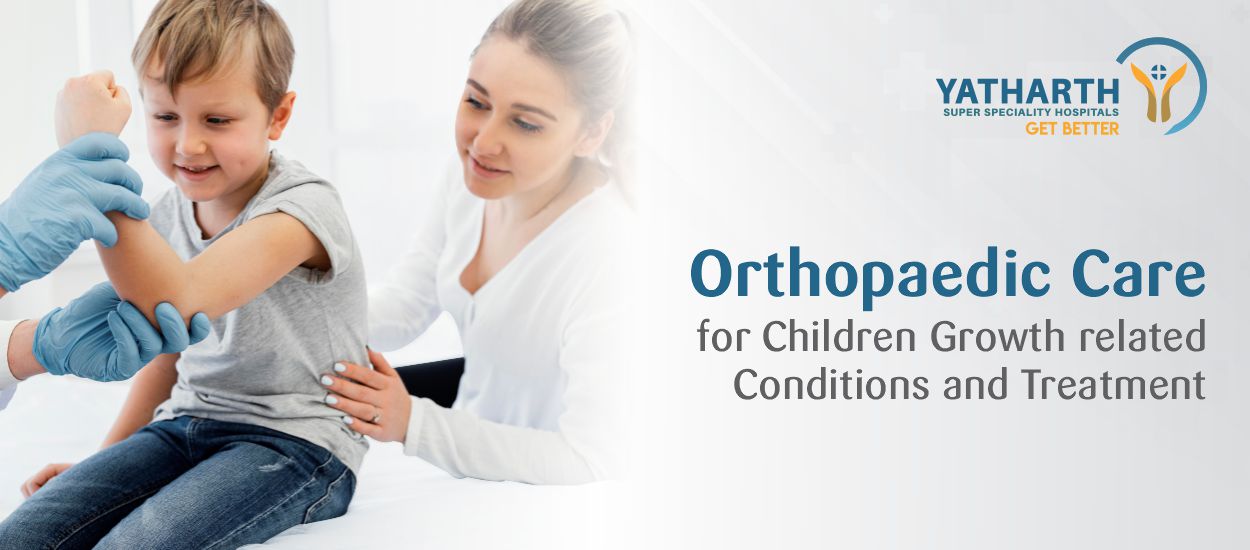How to Keep Your Knee Healthy
Knee pain is a common problem caused by a sudden injury or by an underlying problem like arthritis.......
Read MoreFor infants born with clubfoot, the Ponseti method has become the early treatment of choice, thanks to better outcomes. Currently, 113 out of 193 UN member countries use this method. Over the past two decades, studies indicate that more than 90% of infants with idiopathic clubfoot could achieve initial correction of the deformity with the Ponseti method. Consequently, the Ponseti technique has completely replaced previous surgical and conservative means used to treat clubfoot in many nations.
If a physician rigorously follows the precise method, using all its elements without any modification, children with clubfoot will experience optimum results sooner or later. This method uses a systematic series of casting and orthotic bracing treatments to non-surgically and permanently correct clubfoot in small children.
Developed by Dr Ignacio Ponseti in the 1950s, this treatment is best begun in the first few weeks of an infant’s life to correct the congenital condition without needing major reconstructive surgery. This is the time when the flexible tissues of a newborn’s foot, including the ligaments, tendons, joint capsules and specific bones, will be pliable to gentle manipulation and casting of the feet every week.
Understanding the Different Casting Phases
The initial casting takes about six to eight weeks. The corrective process for the Ponseti technique is segregated into two phases: the treatment phase (when the deformity is completely corrected) and the maintenance phase (when a brace is used to prevent recurrence). In each phase, the technique must be followed precisely to limit the likelihood of an incomplete correction or any recurrence.
Ideally, the treatment must begin within the first week of birth. Every week, gentle manipulation and casting should be done. As each cast retains the foot in the corrected position, it gradually begins to reshape. Typically, five to six casts are necessary to ensure complete correction of the foot and ankle alignment. During the final cast, most infants (90% or higher) will need an Achilles tendon lengthening treatment.
The final cast will stay in place for three weeks. After casting, the removable orthotic brace is worn 23 hours daily in the first three months. The child then continues wearing it while sleeping at night until five years of age.
How it Works
The unique method of manipulation and casting manoeuvres gradually corrects multiple deformities linked to clubfoot in succession. The high arch is flattened first. Then the forefoot and midfoot’s inward position is slowly pushed externally with several casts. The external placement process of the forefoot and midfoot indirectly correct the ankle and hind foot. Ultimately, the final stretching casts will manage the contracted Achilles tendon. If the Achilles tendon is too constricted, which can happen in approximately 90% of cases, the tendon is completely cut.
Before casting, the forefoot’s position with the heel creates a foot cavus (an abnormally high arch). The first cast application treats this issue by aligning the forefoot (front portion of the foot) with the hindfoot (back part of the foot). Thereby, the cavus is corrected, usually after a single cast.
A week later, the first cast is removed. After a brief period of manipulation, the next toe-to-groin plaster cast is put in place. During this manipulation and casting phase, the focus is on straightening the foot by aligning the forefoot and the heel. Proper care should be taken to ascertain the foot’s downward tilt is maintained. Enhanced correction of the downward tilt (due to ankle tightness) will occur in subsequent casts. Before casting, the doctor will manipulate the forefoot to stretch it and determine the degree of correction that may be maintained once the plaster cast is applied.
Repeated Manipulation and Casting
Unlike earlier techniques, the Ponseti method does not seek to directly manipulate the heel. Instead, gradual correction of the hindfoot and midfoot steadily manipulates the heel into the proper position. For the next two to three weeks, manipulation and casting are continued to straighten the forefoot slowly. This allows the forefoot to move in line with the heel. After four or five casts, the normal position of the foot is soon seen.
When it’s time to prepare the final cast, most infants will need a procedure to make sure their Achilles tendon gains adequate length. As a cord behind the ankle, the Achilles tendon enables the ankle’s up-and-down movement. In babies with clubfoot, this tendon is short, preventing the ankle from being bent properly. In most cases, the tendon must be elongated to allow adequate ankle motion.
Before applying the last cast, elongation is done with a percutaneous surgical release of the tendon. This lets the ankle be positioned at a right angle to the leg. A speedy, sterile procedure performed under local anaesthesia, the percutaneous release is generally done via a small puncture in the skin. Since the tendon takes three weeks to heal in the newly elongated position, the final cast must be worn during this period.
The foot and ankle are then cast in the final, corrected position. After the final cast is done, the Achilles tendon will be stretched farther with the forefeet pointing upward. This cast is applied in two stages, with the short-leg component extended to the groin after the lower one has hardened. Usually, five or six casts are required to align the foot and ankle. More may be necessary in severe cases of clubfoot.
Maintenance Protocols and Prevention of Recurrence
Once the final cast is removed, the child is placed into the foot abduction orthosis (FAO) also called a Ponseti brace. The FAO comprises Ponseti shoes (or Ponseti boots) mounted on a bar. This keeps the feet in a corrected position, wherein the forefeet are set apart and pointing upward.
Several studies have shown the high risk of clubfoot recurrence if the brace is not worn as required. Clubfoot recurrence is almost zero if the bracing regimen is followed strictly.
Once casting is done, if the FAO fits perfectly while being worn continuously, the Ponseti method works in around 90% of cases. However, clubfoot recurrence risk persists for some years after the casting and remains most pronounced if the FAO is not used consistently after casting. It’s better if early recurrences are treated with several long-leg plaster casts at fortnightly intervals. The first cast could need correction of recurrent foot deformity with more casts to correct ankle tightness.
A second Achilles tendon lengthening operation could be required in case of insufficient correction at the ankle while a tendon transfer (of the tibialis anterior tendon) may be done in older children to maintain the correction. After this additional surgery, the child will be placed in a cast for a month with the foot kept in a neutral position.
Treating Clubfoot Relapse
Parents can help infants recover completely from clubfoot by ensuring braces remain in place for the entire duration as prescribed. In a small percentage of children, clubfoot may relapse. Although the relapse reasons vary, the most common one is the braces not being worn as long as recommended.
Often, if clubfoot recurs, doctors use the Ponseti method again. The entire series of casts is repeated until the baby’s foot is corrected yet again. The percutaneous Achilles tenotomy is also repeated. Hereafter, the brace must be worn precisely as mandated by doctors to facilitate successful and permanent repositioning of the child’s foot. Strict adherence to guidelines is the best way to avoid recurrence.

Knee pain is a common problem caused by a sudden injury or by an underlying problem like arthritis.......
Read More
The shoulder is the complex joint responsible for much more movements than any other joint in the......
Read More
These growth-related issues require specialised knowledge and experrequiring requires them......
Read More